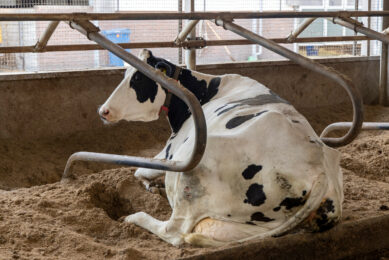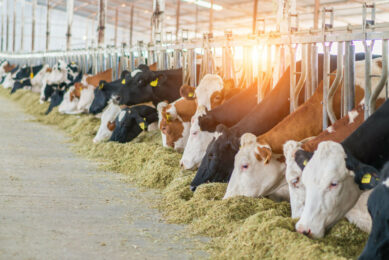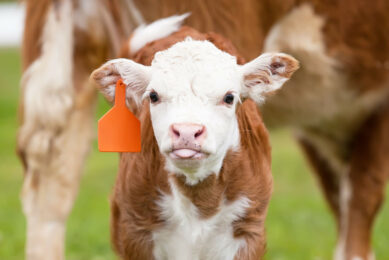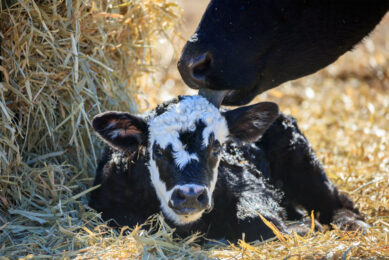Bedding options for dairy cow comfort
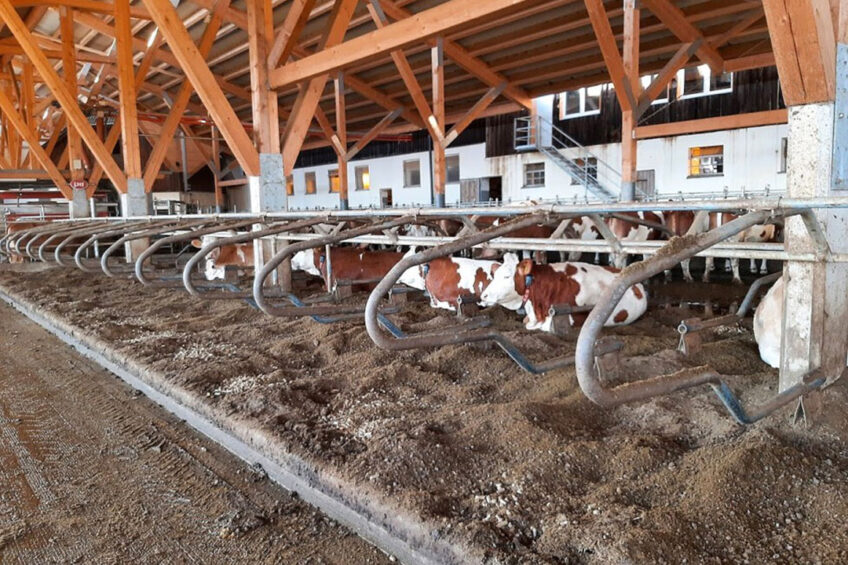
While dairy farmers sleep warm and cosy in their beds at night this winter, they should remember the cows need a comfortable bed, too.
The winter housing period in the northern hemisphere is here, which means cows can spend up to 6 months indoors if they are not already in an indoor-based production system. During housing, cows must be kept comfortable to ensure they maintain good quality milk production and to keep them healthy and well.
When cows have the freedom to move, eat, drink and sleep in their housing, they are comfortable. It is vital, therefore, that their cubicle sleeping areas have comfortable mats and bedding.
As cows can lie for 12-15-hour periods, they need to be relaxed to produce milk. However, it is also during this time that bacteria can attack, causing mastitis. Therefore, bedding must be dry, fresh and replaced often.
Mats and bedding
Cow comfort has moved on leaps and bounds compared to years ago when cows had to lie on bare concrete stands. Nowadays, there are a number of cubicle coverings on the market with various bedding options to provide extra cushion.
Rubber mats of various designs and thickness have been used for decades to put on the concrete bases of cubicles. They were seen as a quick solution to cushioning the hard concrete surface. However, when used individually between the old-style legged cubicle, they were able to slip around a lot and frequently ended up lying on the slats.
Another issue with the individual mats is that dirt, faeces and therefore bacteria can gather between the mats. The mats do require frequent cleaning, and the first examples were prone to being quite slippery and hard.
Today’s rubber mats are much more advanced and can be around 25 mm thick. The mats have grips moulded onto the surface, reducing slippage and retaining sawdust on the surface if used as a dry bedding agent.
Modern cow houses today normally have the cantilever style cubicle fitted, which are free from legs in the middle of the lying area making it much easier for cows to lie down and rise up again, free from any obstruction.
The rubber mats can now be joined together to fit securely under the cantilever cubicle and can be fixed onto the concrete surface to prevent them from moving.
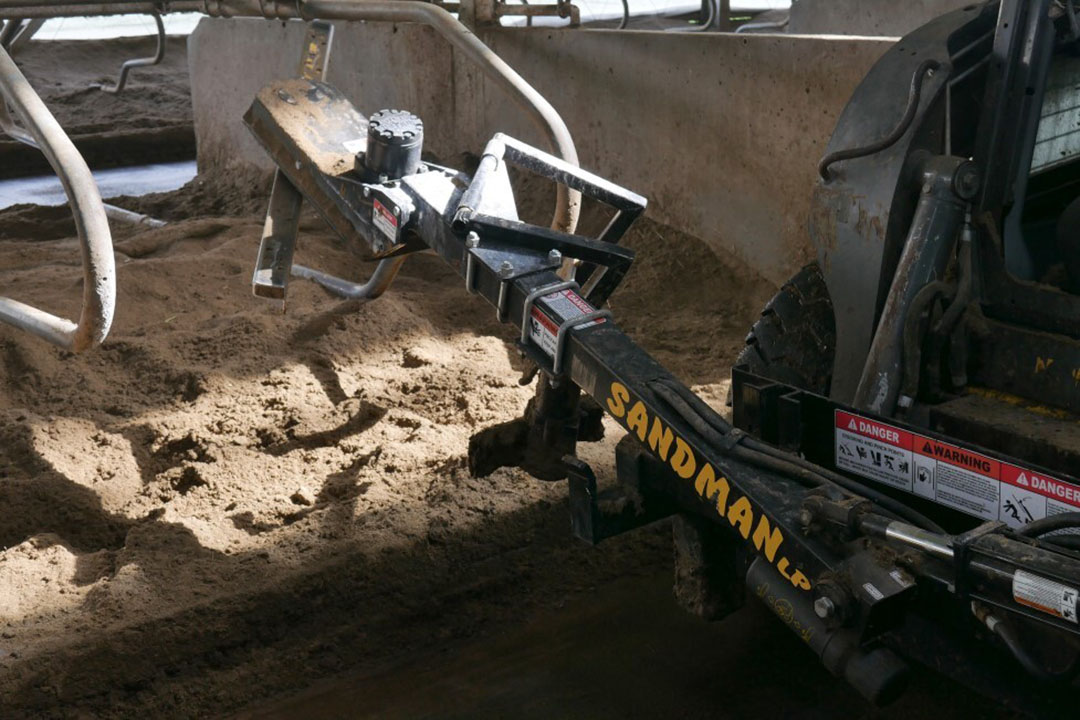
Mattresses
Cow mattresses are somewhat of a step up from the traditional rubber mats in that they can be thicker and softer, giving extra luxury to the cow. Normally they consist of a mattress filled with rubber crumb, stitched into sections for extra durability. One mattress is laid into each cubicle side-by-side and then covered by a top cover the full length of the cubicle run. This top cover is very hard-wearing and waterproof. They are warranted for over 10 years in most cases.
Waterbeds
At the top end of the cow comfort luxury scale are waterbeds. These consist of a mattress divided into 2 sections that are filled with water. The mattresses are then covered with a hard-wearing top cover to protect them.
The idea is that the waterbed can support the cow’s joints at any point when she is lying down or rising up, as the water moves to where it is needed.
This consistent support gives the cow superior comfort. When she rises, the mattress returns to its original shape ready to support the next animal that lies down on it.
Cubicle bedding
Different dairy farmers worldwide have their own ideas about what makes the perfect bedding material for dairy cow cubicles. Indeed, some argue that when mats or mattresses are in a cubicle there is no need for bedding. However, others say each cubicle always needs a sprinkling of bedding to keep the surfaces dry and more comfortable for the cow.
A good bedding material should be comfortable, non-abrasive, highly absorbent of water and urine, non-slippery and low in environmental bacteria.
There are many options, including sand, sawdust, woodchip, wastepaper, calcium carbonate and straw. It is important to ensure that any bedding material has been screened to remove contaminants. It is also important that the farm’s slurry system can handle the type of material used for the cows’ bedding.
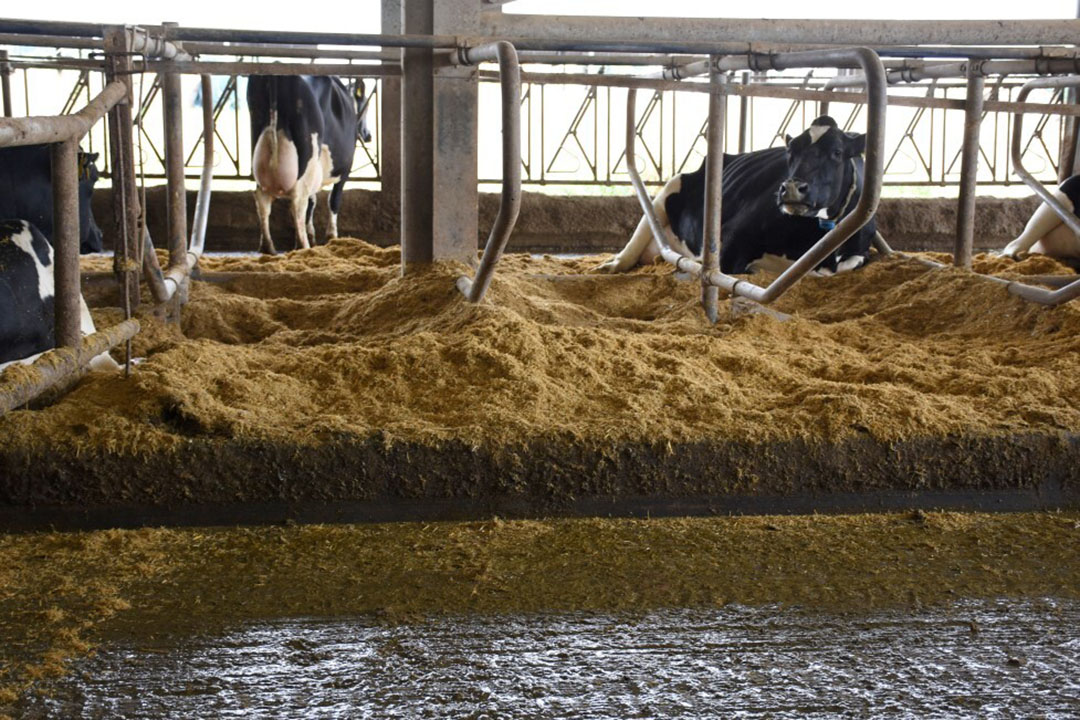
A look at 5 bedding options
![]() Sawdust
Sawdust
The most common form of bedding for cubicles is sawdust, a by-product of many timber and manufacturing industries. This material needs to be very dry for use, as any damp attracts bacteria which defeats the purpose of bedding in the first place. It also needs to be well sieved to keep the material free from splinters and larger pieces of wood that could damage the cow’s feet or udder.
Good quality sawdust is non-abrasive, dry, highly absorbent and relatively dust-free. It keeps cows clean and can be handled by slurry scrapers and slurry systems.
If the bedding material is too dry, it can cause clouds of dust which could be harmful to farmers and their workers if inhaled.
![]() Sand
Sand
Sand is sometimes used as bedding as it is relatively dust-free and quite absorbent, helping to create a well-drained bed. However, the texture of the sand can prove very abrasive on the animals as well as on the slurry system and farm machinery.
![]() Woodchip
Woodchip
Woodchip can be used, but it is advised to be under 30% dry matter. It can be used many times but must be stored in a dry area. When it becomes soiled in the shed, woodchip can be spread on the fields as a fertiliser/compost material.
![]() Calcium carbonate
Calcium carbonate
There are mixed views from farmers about the use of calcium carbonate or lime. It can be absorbent, but it can also irritate skin and teats.
![]() Recycled manure solids
Recycled manure solids
Some farmers like to use their own “green” bedding by separating the solids from their cattle slurry. However, there are several regulations stipulating the use of this recycled material.
Manure from other livestock species must not be included, to avoid introducing external pathogens that may affect cattle health. Recycled manure solids can only be used as bedding for cattle that are in the same epidemiological unit as those cattle from which it is generated to minimise the risk of disease transfer.
It is advised that recycled manure solids is only used on cubicle beds, either as a layer on top of mattresses or as a cubicle bed up to 15 cm in depth. It shouldn’t be used for cattle under 12 months old or as a deep bed in pens or yards. It could introduce newborn calves to Johne’s disease or other pathogens.
Join 13,000+ subscribers
Subscribe to our newsletter to stay updated about all the need-to-know content in the dairy sector, two times a week.



